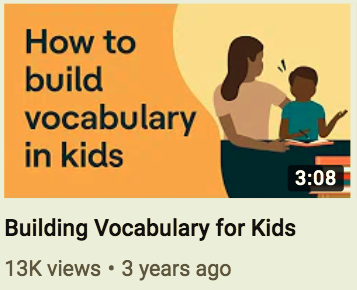UNDERSTOOD.ORG
The ask: As part of a brand update on their social channels, Understood wanted to revamp their copy on its social media channels. This included new titles and new descriptions optimized for search.
The task: Navigate a complex, and sensitive, field. Get up to speed on Understood’s brand, voice, and style guide. Deliver Pinterest titles, descriptions, hashtags, and boards based on best practices for search. Deliver YouTube titles, descriptions, and tags, based on best practices for search.
My role: Understood developed the Pinterest imagery and I developed the surrounding copy. For YouTube, update existing videos with new copy that’s engaging and search friendly.
“Sorry” is more than just a way to apologize. It can also be an effective strategy for your child to learn how to apologize. Watch as our expert explains the S-O-R-R-Y strategy for apologizing in this video.
Kids with learning and thinking differences may find apologizing difficult. But, there are some handy ADHD strategies to help you and your child. Watch this video to learn how to create an apology lesson plan. Our expert also walks through apology scenarios you can try with your child. You can also download a handy worksheet here.
Here’s how you can make building vocabulary a part of your child’s daily routine. “Building your child’s vocabulary will help them develop a greater command of language and ideas and that can make all the difference in becoming a successful reader,” says our expert.
Watch as reading specialist Elizabeth Babbin, MEd, shares her vocabulary building strategies. Kids with learning and thinking differences may face challenges as they learn to read. One way to help your child thrive is to build up their vocabulary. That way they can read more books and be exposed to more words. These vocabulary building strategies are a fun way to help your child as they learn to read.
Want to learn how to motivate your child all year long? Watch as our expert shares her tips for motivating kids.
Virginia Gryta, MS, shares her strategies to motivate kids and help them learn academic skills. Kids with learning and thinking differences may find it difficult to stay motivated. She recommends a fun project or a family book club as two ways to motivate your child. A fun or exciting project can help motivate your child to stay focused and finish the task.
Watch as Derrick Torres, lead coach of the Edge Foundation shares three popular problem-solving techniques for your child to strengthen executive function. Learning to problem solve is a vital skill, but it can be difficult for kids with learning and thinking differences.
These life coaching exercises are open conversations tailored for what’s important to them at any given point in time.
If you’re asking yourself, “What are my child’s strengths?” try this fun, crafty activity. We all think differently and this DIY activity for your child will help you identify your child’s strengths and learn how they see the world. Work together with your child to create their own Strengths Chain. As they gain new skills, you can add to the chain. All you need are markers or crayons, colored construction paper, scissors, and tape.
What’s the difference between an IEP and a 504 plan? As a parent, it helps to understand the different rules so you can provide the support your child needs. Both establish plans for your child to thrive with some important differences. For example, IEP accommodations and 504 plan accommodations are different. An IEP includes formal written goals and objectives. A 504 plan has no formal written requirements.
Kids with learning and thinking differences have their own strengths and can thrive. They just happen to see the world differently. What you think as “easy,” other people may find difficult. That’s also true for kids with a specific learning and thinking difference known as dyslexia. For example, kids with dyslexia need different ways to work and alternative ways to read. Keep in mind, by doing things differently, kids with learning and thinking differences can, and do, thrive.







